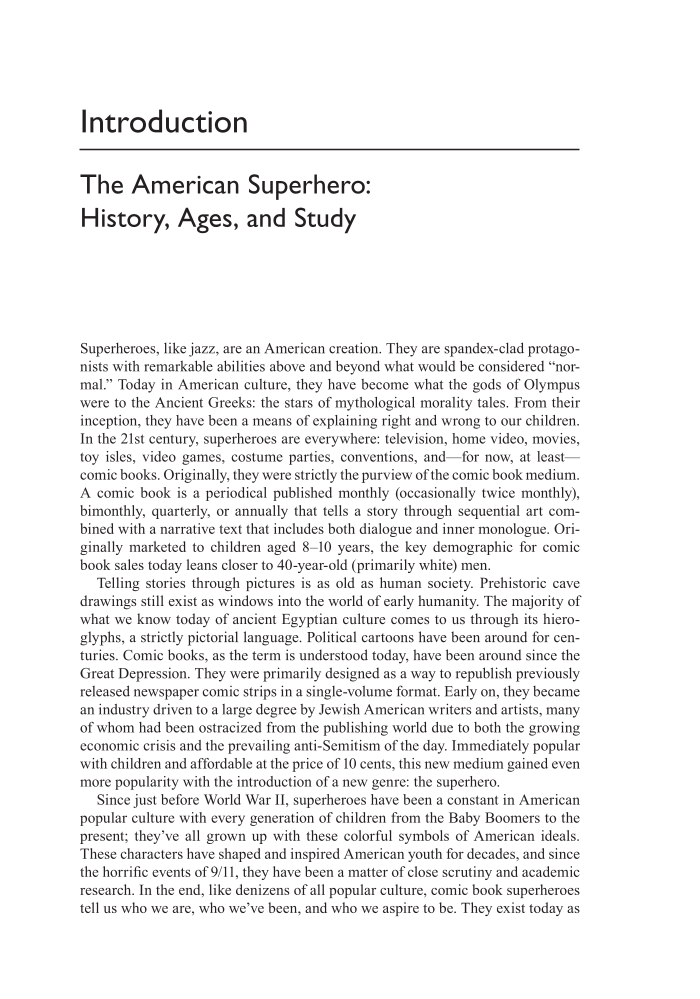Introduction The American Superhero: History, Ages, and Study Superheroes, like jazz, are an American creation. They are spandex-clad protago- nists with remarkable abilities above and beyond what would be considered “nor- mal.” Today in American culture, they have become what the gods of Olympus were to the Ancient Greeks: the stars of mythological morality tales. From their inception, they have been a means of explaining right and wrong to our children. In the 21st century, superheroes are everywhere: television, home video, movies, toy isles, video games, costume parties, conventions, and—for now, at least— comic books. Originally, they were strictly the purview of the comic book medium. A comic book is a periodical published monthly (occasionally twice monthly), bimonthly, quarterly, or annually that tells a story through sequential art com- bined with a narrative text that includes both dialogue and inner monologue. Ori ginally marketed to children aged 8–10 years, the key demographic for comic book sales today leans closer to 40-year-old (primarily white) men. Telling stories through pictures is as old as human society. Prehistoric cave drawings still exist as windows into the world of early humanity. The majority of what we know today of ancient Egyptian culture comes to us through its hiero- glyphs, a strictly pictorial language. Political cartoons have been around for cen- turies. Comic books, as the term is understood today, have been around since the Great Depression. They were primarily designed as a way to republish previously released newspaper comic strips in a single-volume format. Early on, they became an industry driven to a large degree by Jewish American writers and artists, many of whom had been ostracized from the publishing world due to both the growing economic crisis and the prevailing anti-Semitism of the day. Immediately popular with children and affordable at the price of 10 cents, this new medium gained even more popularity with the introduction of a new genre: the superhero. Since just before World War II, superheroes have been a constant in American popular culture with every generation of children from the Baby Boomers to the present they’ve all grown up with these colorful symbols of American ideals. These characters have shaped and inspired American youth for decades, and since the horrific events of 9/11, they have been a matter of close scrutiny and academic research. In the end, like denizens of all popular culture, comic book superheroes tell us who we are, who we’ve been, and who we aspire to be. They exist today as
Document Details My Account Print multiple pages
Print
You have printed 0 times in the last 24 hours.
Your print count will reset on at .
You may print 0 more time(s) before then.
You may print a maximum of 0 pages at a time.















































































































































































































































































































































































































